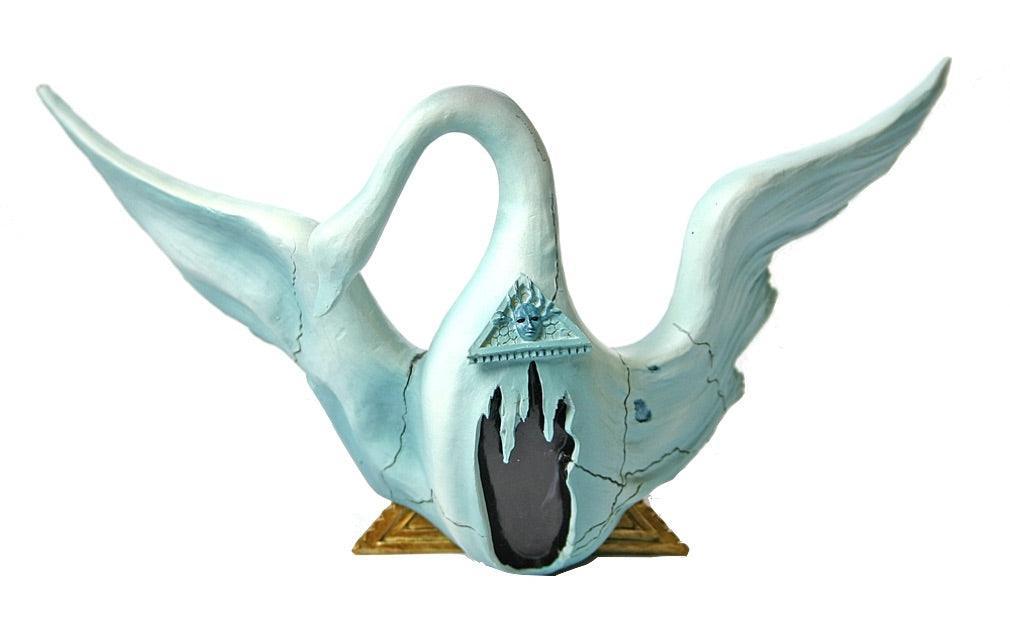Dali Fantasy Swan Statue Bacchanale Ballet Surrealism by Salvador Dali 7W
Dali Fantasy Swan Statue Bacchanale Ballet Surrealism by Salvador Dali 7W
Share
SKU:SD08
In stock
Couldn't load pickup availability
This statue adaptation of the Winged Swan from the Bacchanale was originally a stage backdrop for the ballet production. It has been adapted as a 3D statue by the renowned European manufacturer Parastone Mouseion 3D Collection and is certified on the underside by the Dali Foundation.
During his years in America, Salvador Dali did not limit his activities solely to painting. He designed advertisements, wrote an autobiography, worked on cinema and designed for theater and ballet productions. His first design for the ballet was Bacchanale (originally named in German "Venusberg), for which he also wrote the scenario and designed the costumes. It was a Metropolitan Opera production, choreographed by Leonide Massine for the Ballet Russe de Monte Carlo. The ballet was set to the music of Richard Wagner, whose insane patron, king Ludwig II, was portrayed in the scenario.
- Material : Collectible quality, resin with hand-painted color details, matte and glossy finish. Statue replica is from the highly collectible Parastone Mouseion 3D Collection. PN SD08
- Included : Full color card with image of original artwork. Description card about artist and artwork. Both cards are in four languages.
- Dimensions : 7 in. x 4 in. x 3 in. Weight 0.4 lbs.
ABOUT THE ART PERIOD - SURREALISM:
Dali sublimated his life in his art of painting. Relying on great craftsmanship, acquired in all sorts of art experiments, he lifted surrealism, in an inimitable self-willed manner, to exceptional heights. He photographed, as it were, associatively what was enacted in his mind. Incited by, at the time, new psychological insights he tried to fix his subconscious with images, and to visualize his dreams in all their inscrutable symbolism. It was for this purpose that he developed his famous "paranoid-critical" method. To us, one dimensional mortal souls, only the paintings and other expressions remain as fascinating witnesses to a literally unbelievably intense and active life. Perhaps we are so drawn to them because not only do they allow us to have a look inside Dali's subconscious, but they also are a mirror reflecting our own souls.








